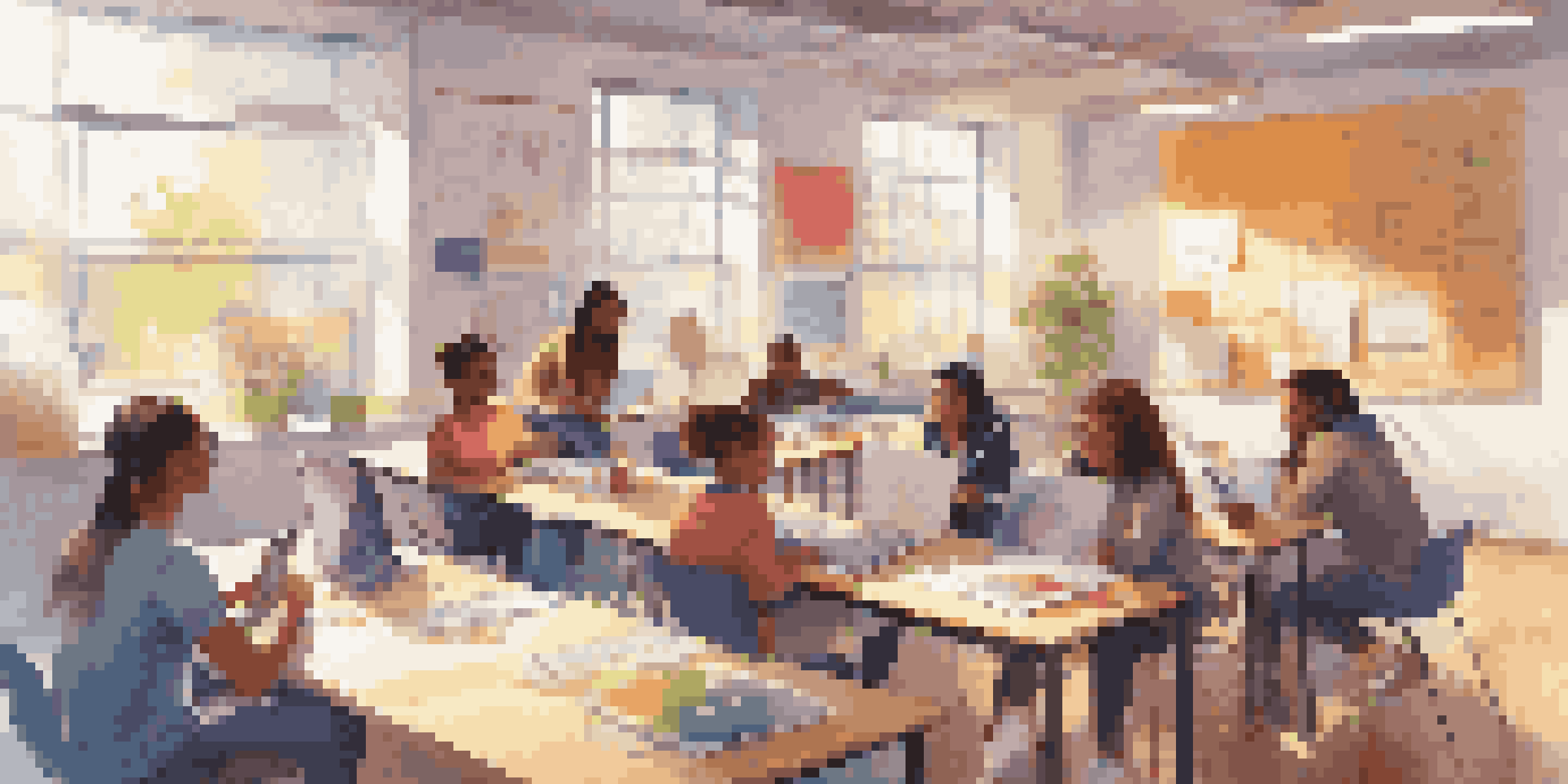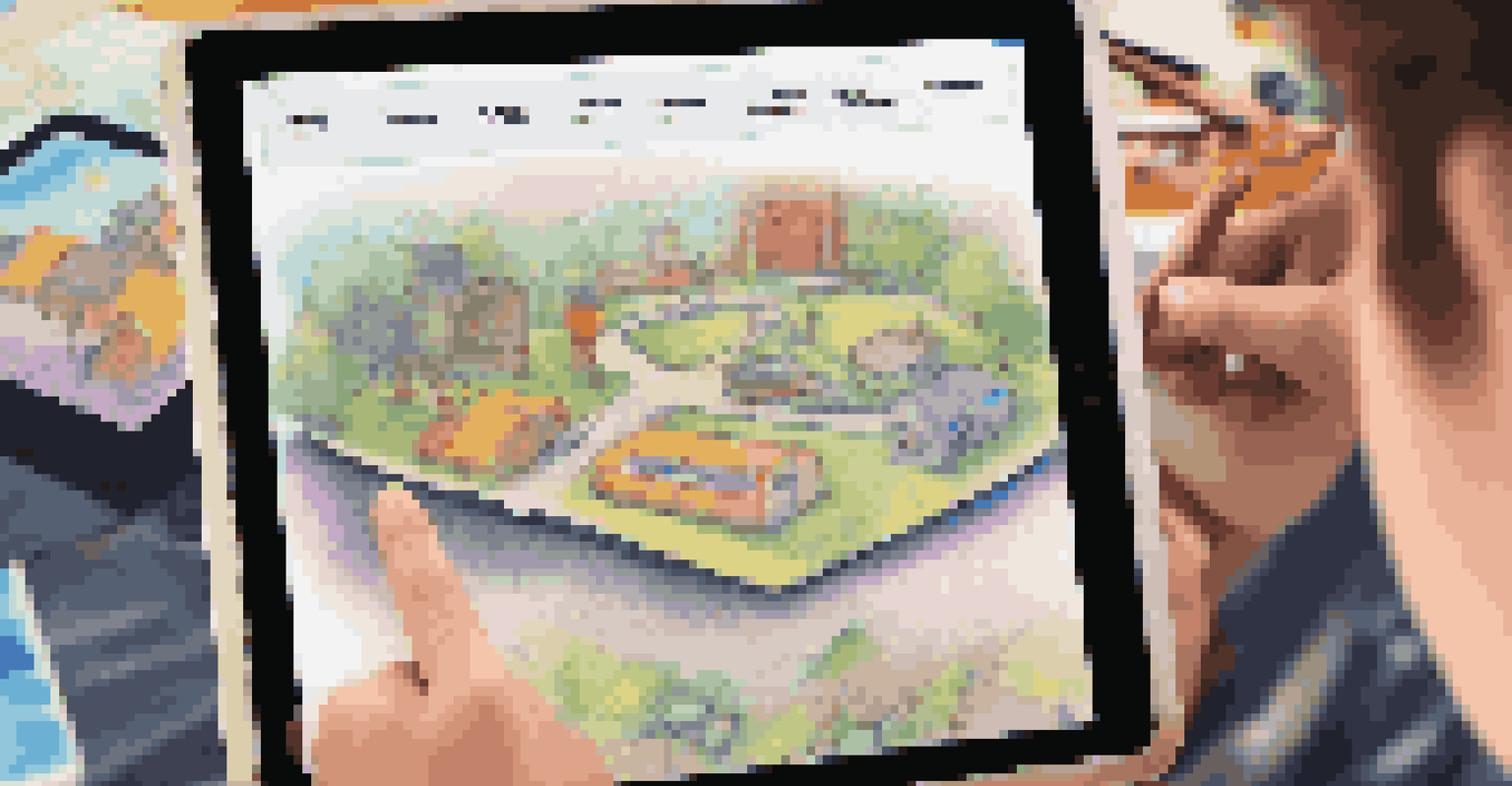Creating Collaborative Projects with Transmedia Learning Tools

Understanding Transmedia Learning and Its Benefits
Transmedia learning involves using multiple media platforms to create a unified learning experience. Imagine a story that unfolds across a book, a movie, and an online game, each adding layers to the narrative. This approach not only captures attention but also caters to diverse learning styles, enhancing engagement and retention.
Learning is a treasure that will follow its owner everywhere.
One of the key benefits of transmedia learning is its ability to foster collaboration among students. When learners work together on projects that span various media, they must communicate and share ideas effectively. This collaborative aspect mimics real-world scenarios, preparing students for future teamwork in their careers.
Additionally, transmedia tools encourage creativity and critical thinking. By allowing students to choose how they want to express their understanding of a topic, these tools empower them to take ownership of their learning journey. As they explore different platforms, they develop problem-solving skills that are invaluable in any field.
Choosing the Right Transmedia Tools for Your Project
Selecting the right transmedia tools is crucial for the success of collaborative projects. Consider the goals of your project and the interests of your students. For instance, if you're focusing on storytelling, platforms like StoryMapJS or Twine can help students create interactive narratives.

It's also important to think about accessibility and ease of use. Tools that are user-friendly will encourage participation and minimize frustrations. Platforms like Google Slides or Padlet can facilitate collaboration without overwhelming students with complex features.
Benefits of Transmedia Learning
Transmedia learning enhances engagement, collaboration, creativity, and critical thinking by integrating multiple media platforms into the learning experience.
Lastly, ensure that the tools you choose can integrate seamlessly with each other. A project that combines video creation on WeVideo with a discussion forum like Flipgrid can provide a rich, multi-layered learning experience. This interconnectedness allows students to engage with the project from different angles, enhancing their overall understanding.
Setting Clear Goals for Collaborative Learning
Before diving into a transmedia project, it's essential to set clear and achievable goals. What do you want your students to learn or accomplish by the end of the project? By defining these objectives upfront, you give students a roadmap to follow, which can enhance their focus and motivation.
Alone we can do so little; together we can do so much.
Involving students in the goal-setting process can also lead to greater investment in the project. When learners help determine the outcomes, they feel more responsible for their contributions. This sense of ownership can lead to deeper engagement and a stronger commitment to collaboration.
Moreover, clear goals provide a framework for assessment. You can develop rubrics that align with the objectives, making it easier to evaluate student performance. By doing this, you ensure that collaboration is not just fun but also meaningful and educational.
Encouraging Effective Communication Among Students
Effective communication is the backbone of any successful collaborative project. One way to encourage this is by establishing communication norms at the start of the project. For example, students might agree on how often to check in with each other or which platforms to use for discussions.
Utilizing digital communication tools can also enhance collaboration. Platforms like Slack or Microsoft Teams allow students to share ideas and feedback in real-time, fostering a sense of community. These tools can break down barriers, especially for shy students who may hesitate to speak up in person.
Choosing Effective Tools
Selecting user-friendly and compatible transmedia tools is essential for facilitating collaboration and enhancing the learning experience.
Additionally, incorporating regular feedback sessions can help students refine their ideas and approaches. By providing a structured space for peer review, you encourage students to listen and respond to each other's perspectives, which is crucial for effective collaboration.
Fostering Creativity in Collaborative Projects
Creativity is a vital component of transmedia learning, and fostering it can lead to innovative project outcomes. Encourage students to brainstorm and explore various ideas before settling on a final concept. Techniques like mind mapping can help visualize their thoughts and spark new ideas.
Providing flexibility in how students express their ideas is another way to nurture creativity. Whether it's through video, podcasts, or interactive presentations, giving students the freedom to choose their medium promotes individual expression. This not only makes the project more enjoyable but also allows for a richer exploration of the subject matter.
Finally, celebrate creativity within the classroom. Recognizing and sharing innovative ideas can inspire students and set a positive tone for collaboration. Whether through a showcase event or a simple classroom display, highlighting creative works fosters an environment where students feel valued and motivated to explore.
Assessing Collaborative Projects Effectively
Assessment in collaborative projects can be challenging yet rewarding. It's essential to evaluate both individual contributions and group dynamics. Consider using peer evaluations alongside traditional grading to capture each student's involvement and teamwork skills.
Incorporating self-reflection is another powerful assessment tool. Encourage students to reflect on their roles in the project, what they learned, and how they can improve. This practice not only aids in personal growth but also fosters accountability within the group.
Importance of Goal Setting
Setting clear goals and involving students in the process fosters ownership, motivation, and provides a framework for meaningful assessment.
Lastly, consider the project's overall impact on student learning. Did they meet the established goals? Did they develop new skills or knowledge? By assessing the project holistically, you can provide valuable feedback that benefits future collaborative endeavors.
Celebrating Success and Reflecting on Learning
Celebrating the completion of a collaborative project is vital for reinforcing the learning experience. Acknowledging students' hard work and creativity can boost morale and motivate them for future projects. Consider hosting a showcase where students present their work to peers or parents.
Reflection is equally important after the project wraps up. Facilitate a discussion where students share their experiences, challenges, and successes. This reflection allows them to process their learning and gain insights into their collaborative skills.

Lastly, encourage students to think about how they can apply what they've learned in future projects or real-world situations. By making connections between their experiences and broader contexts, you help solidify the value of collaborative learning in their educational journey.